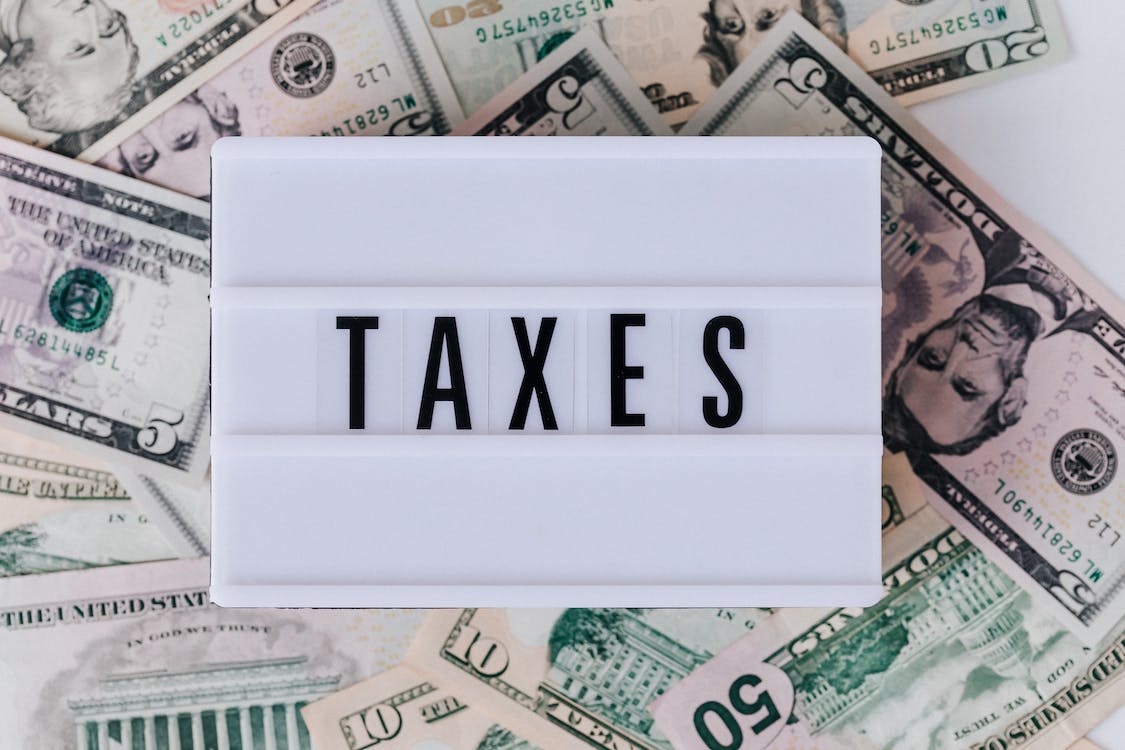How to Maximize Your Tax Refund: Tips and Strategies
Are you ready to make the most of your tax refund? With tax season just around the corner, it’s the perfect time to start thinking about how you can maximize your return. Whether you’re expecting a big refund or a small one, there are several tips and strategies you can employ to ensure you keep as much money in your pocket as possible.
In this article, we’ll explore some expert advice on how to get the most out of your tax refund. From smart filing tactics to tax credits and deductions you may be eligible for, we’ll cover everything you need to know to optimize your return. Plus, we’ll provide useful tools and resources to help you navigate the complex world of taxes.
By following these tips and strategies, you can make sure you’re not leaving any money on the table and make the most of your tax refund. So get ready to take control of your finances and make every penny count. Let’s dive in!
Understanding your tax refund
Understanding how your tax refund works is the first step in maximizing it. Your tax refund is the amount of money the government owes you because you overpaid your taxes throughout the year. It’s essentially an interest-free loan you’ve given to the government, and getting a refund means you’re getting that money back.
To understand the size of your refund, you need to know how much you’ve paid in taxes and how much you’re eligible to receive in deductions and credits. The more accurate your calculations are, the better you can plan for how to use that money once it’s returned to you.
Importance of maximizing your tax refund
Maximizing your tax refund is crucial because it allows you to keep more of your hard-earned money. By employing strategies to increase your refund, you can use the extra funds to pay off debt, save for the future, or invest in opportunities that will benefit you in the long run.
Some people may argue that it’s better to owe money at tax time rather than receive a refund. While it’s true that owing money means you didn’t give the government an interest-free loan, it can also lead to financial strain if you’re not prepared to pay a large sum. Therefore, maximizing your refund and planning your finances accordingly is often the smarter choice.
Common deductions and credits
One of the most effective ways to maximize your tax refund is by taking advantage of deductions and credits. Deductions reduce your taxable income, which means you’ll owe less in taxes, while credits directly reduce the amount of tax you owe. Here are some common deductions and credits you should be aware of:
1. Standard deduction: This is a fixed amount that reduces your taxable income. It’s available to all taxpayers, and the amount varies depending on your filing status.
2. Itemized deductions: These deductions allow you to claim specific expenses, such as mortgage interest, state and local taxes, medical expenses, and charitable donations. You can choose either the standard deduction or itemized deductions, whichever is more beneficial for you.
3. Child tax credit: If you have children, you may be eligible for a tax credit that can significantly reduce your tax bill. The child tax credit provides a credit for each qualifying child under the age of 17.
4. Earned Income Tax Credit (EITC): The EITC is a refundable tax credit for low to moderate-income individuals and families. Depending on your income and the number of qualifying children you have, you may be eligible for a substantial credit.
Keeping organized records
To maximize your tax refund, it’s essential to keep organized records throughout the year. This will help you accurately report your income and expenses and ensure you claim all eligible deductions and credits. Here are some tips for staying organized:
1. Maintain a filing system: Create a system to keep track of all your tax-related documents, such as W-2s, 1099s, receipts, and financial statements. Organize them by year and category, making it easy to find what you need when it’s time to prepare your taxes.
2. Use technology: Take advantage of digital tools and software that can help you track your income and expenses. Many apps and programs are available to simplify the process and automatically categorize your transactions.
3. Keep up with tax law changes: Tax laws and regulations can change from year to year. Stay informed about any changes that may impact your deductions or credits, so you don’t miss out on potential savings.
Filing status and its impact on your refund
Your filing status plays a significant role in determining your tax liability and refund amount. There are five filing statuses: Single, Married Filing Jointly, Married Filing Separately, Head of Household, and Qualifying Widow(er) with Dependent Child. Each status has its own set of rules and tax brackets, so it’s crucial to choose the one that best suits your situation.
Married couples often wonder whether it’s better to file jointly or separately. In most cases, filing jointly results in a lower overall tax bill and potentially a larger refund. However, there are situations where filing separately may be more advantageous, such as when one spouse has significant medical expenses or student loan payments.
Before deciding on your filing status, calculate your tax liability under both options to determine which one will provide the most favorable outcome for your specific circumstances.
Utilizing tax deductions and credits
To maximize your tax refund, it’s crucial to take advantage of all the deductions and credits you’re eligible for. Here are some additional strategies to consider:
1. Educational expenses: If you or your dependents are pursuing higher education, you may be eligible for education-related tax benefits, such as the American Opportunity Credit or the Lifetime Learning Credit.
2. Homeownership deductions: If you own a home, there are several deductions you can claim, including mortgage interest, property taxes, and mortgage insurance premiums.
3. Healthcare deductions: Medical and dental expenses that exceed a certain percentage of your adjusted gross income can be deducted. Keep track of all your medical expenses throughout the year, including insurance premiums, prescriptions, and doctor visits.
4. Charitable contributions: Donations made to qualified charitable organizations can be deducted from your taxable income. Keep receipts or acknowledgment letters as proof of your donations.
Timing your deductions and expenses
Timing is everything when it comes to maximizing your tax refund. Certain deductions and expenses can be strategically planned to maximize your tax benefits. Here are a few examples:
1. Bunching deductions: Instead of spreading out your deductible expenses evenly over the years, consider “bunching” them into a single year. This strategy can help you exceed the threshold for itemizing deductions, resulting in a larger tax break.
2. Prepaying expenses: If you anticipate major expenses in the near future, such as medical procedures or home repairs, consider prepaying them before the end of the tax year. This allows you to claim the deduction in the current year and potentially reduce your tax liability.
3. Timing your charitable contributions: Consider making your charitable contributions at the end of the year to maximize your deductions. However, remember to donate to reputable organizations and keep proper documentation to substantiate your donations.
Maximizing retirement contributions
Contributing to retirement accounts not only helps secure your financial future but can also provide immediate tax benefits. By maximizing your retirement contributions, you can reduce your taxable income and potentially increase your tax refund. Here are a few ways to make the most of retirement contributions:
1. Maximize your 401(k) contributions: If your employer offers a 401(k) plan, take advantage of it by contributing the maximum allowed amount. These contributions are made on a pre-tax basis, reducing your taxable income and potentially increasing your refund.
2. Consider an IRA: If you don’t have access to a 401(k) or want additional retirement savings, consider contributing to an Individual Retirement Account (IRA). Depending on your income and filing status, contributions to a traditional IRA may be tax-deductible.
3. Catch-up contributions: If you’re 50 years or older, you’re eligible to make catch-up contributions to your retirement accounts. These additional contributions can provide extra tax benefits while helping you boost your retirement savings.
Working with a tax professional
Navigating the complexities of the tax system can be overwhelming, especially if you have multiple income sources, investments, or business expenses. Working with a tax professional can help ensure you maximize your tax refund and minimize any potential errors or audits. Here are some benefits of seeking professional assistance:
1. Expert advice: A tax professional can provide expert advice tailored to your specific financial situation. They can identify deductions and credits you may have overlooked and provide guidance on tax planning strategies.
2. Peace of mind: By entrusting your tax preparation to a professional, you can have peace of mind knowing your return is accurate and in compliance with all tax laws and regulations.
3. Audit protection: If you’re ever audited by the IRS, a tax professional can represent you and handle all communication on your behalf. Their expertise can help ensure a fair and favorable outcome.
Conclusion
Maximizing your tax refund requires careful planning, organization, and knowledge of the tax system. By understanding your refund, taking advantage of deductions and credits, keeping organized records, and utilizing smart strategies, you can ensure you’re making the most of your tax return.
Remember to stay informed about changes in tax laws, consult with a tax professional if needed, and always aim to optimize your financial situation. By following these tips and strategies, you can make sure you’re not leaving any money on the table and make the most of your tax refund. So get ready to take control of your finances and make every penny count.



